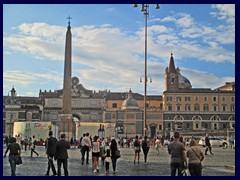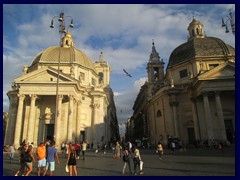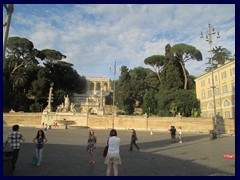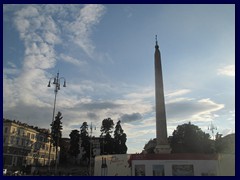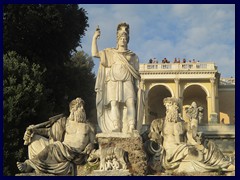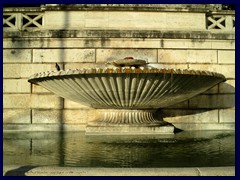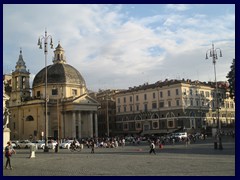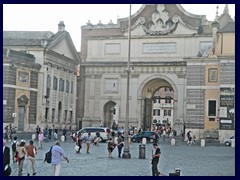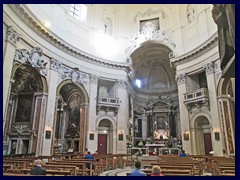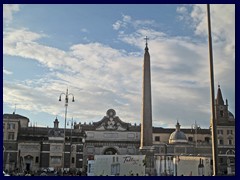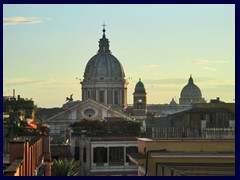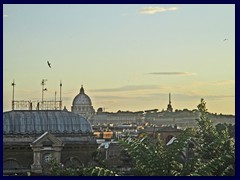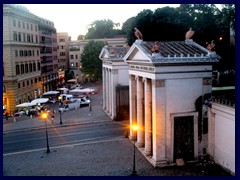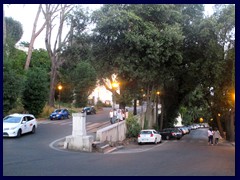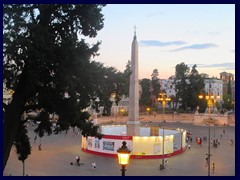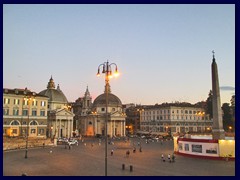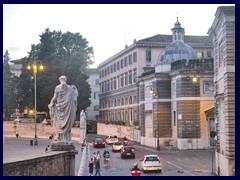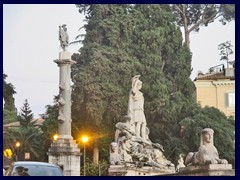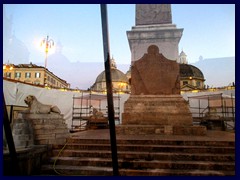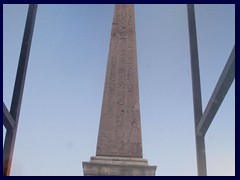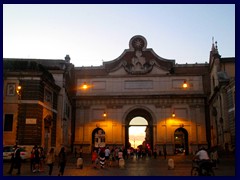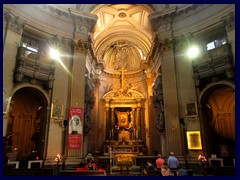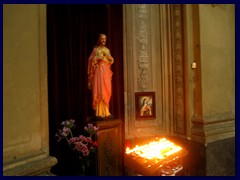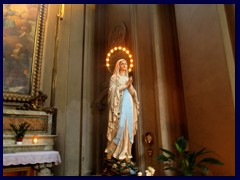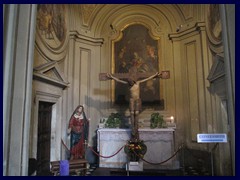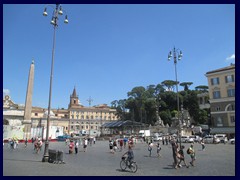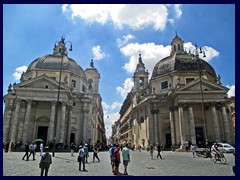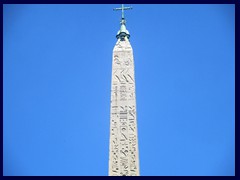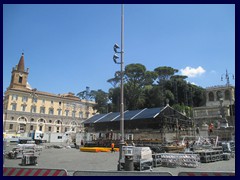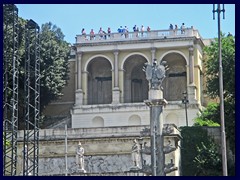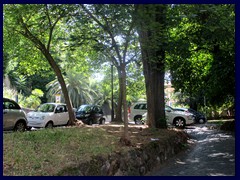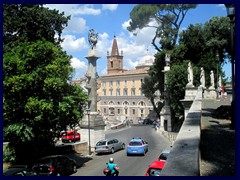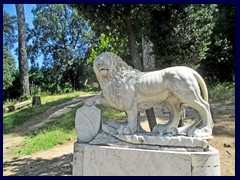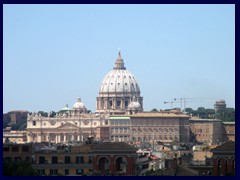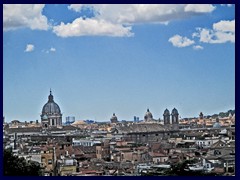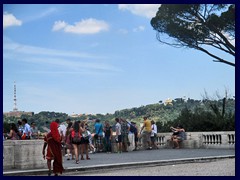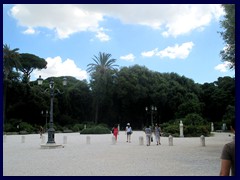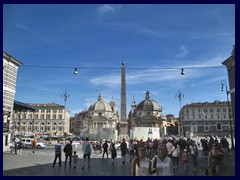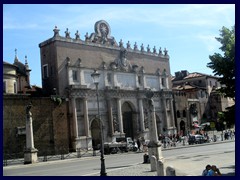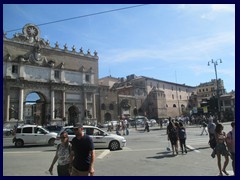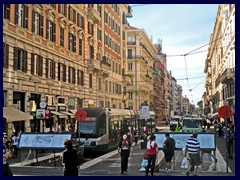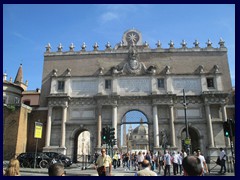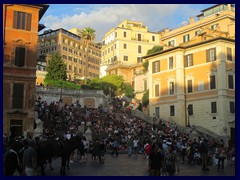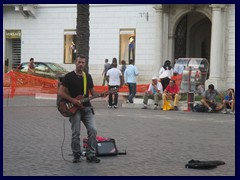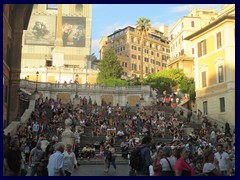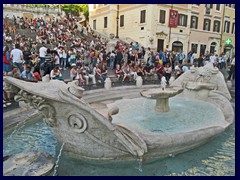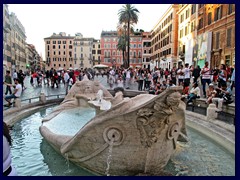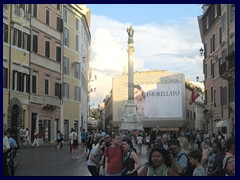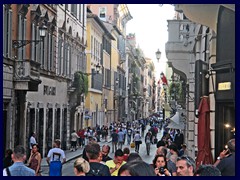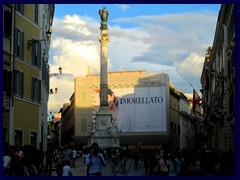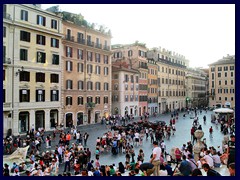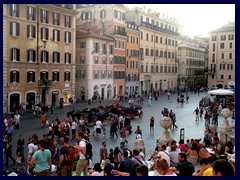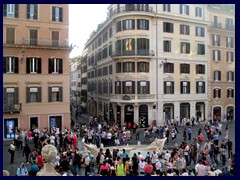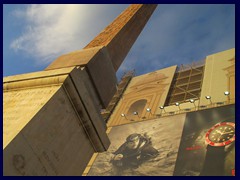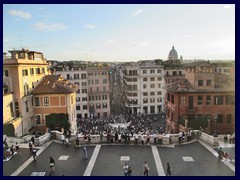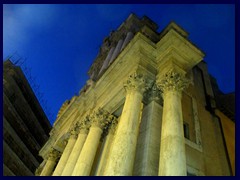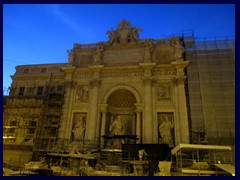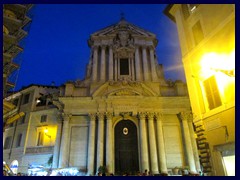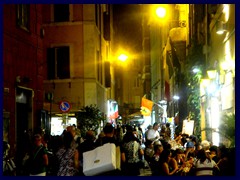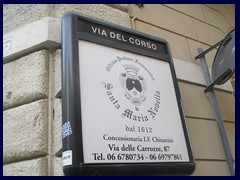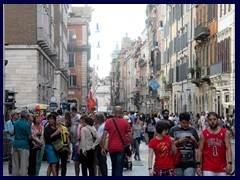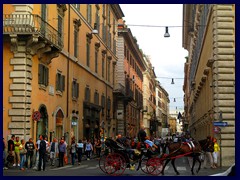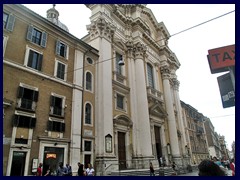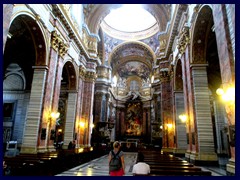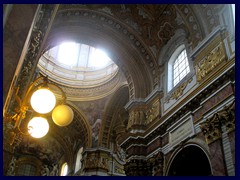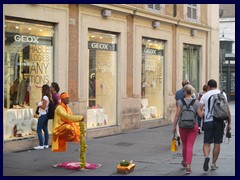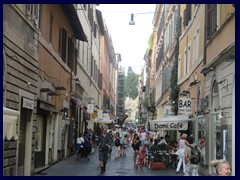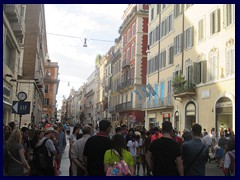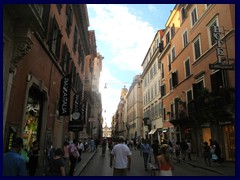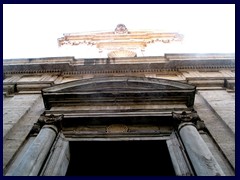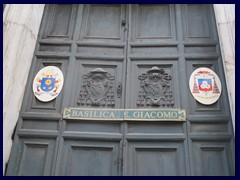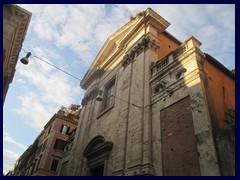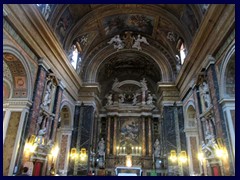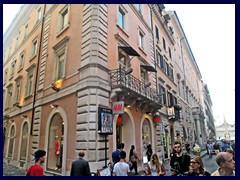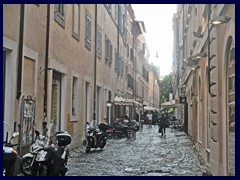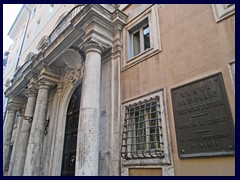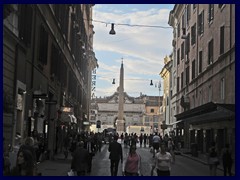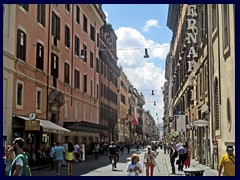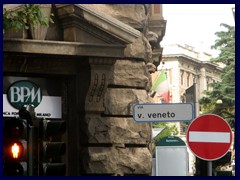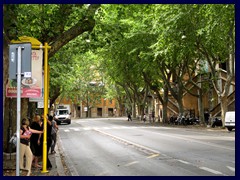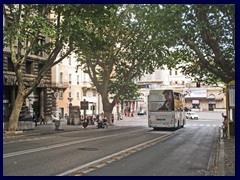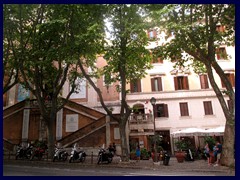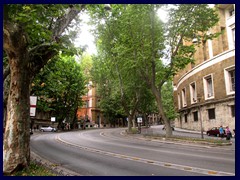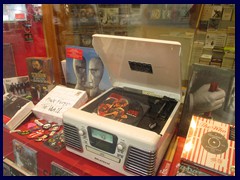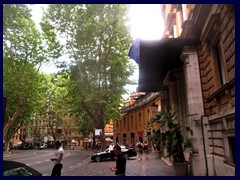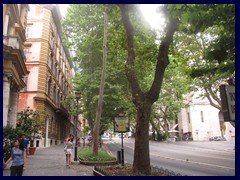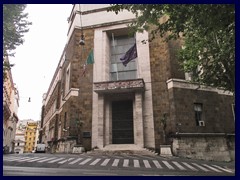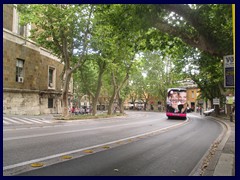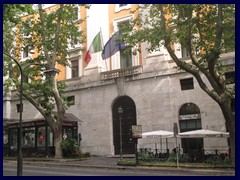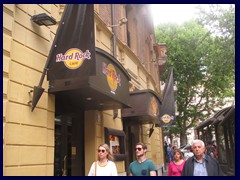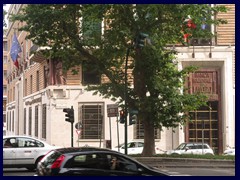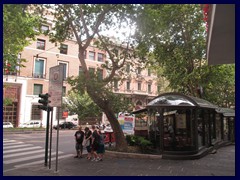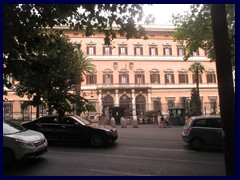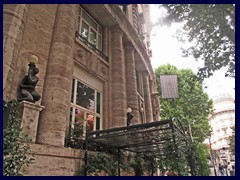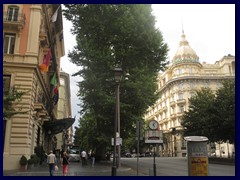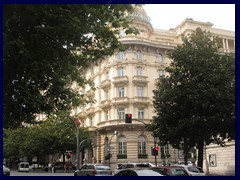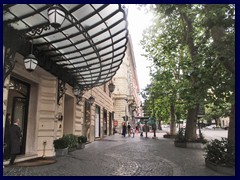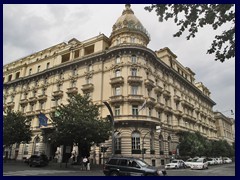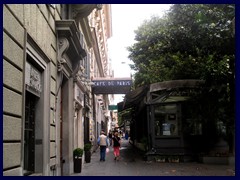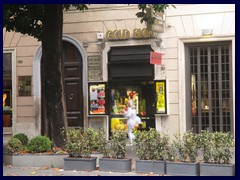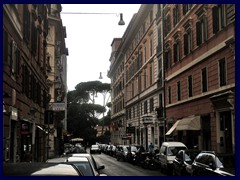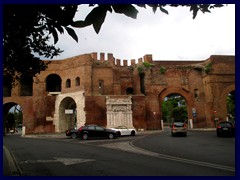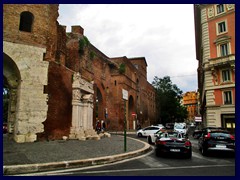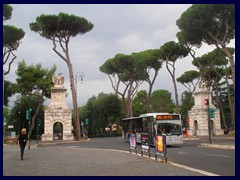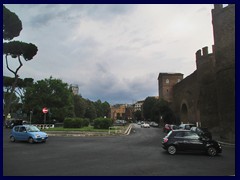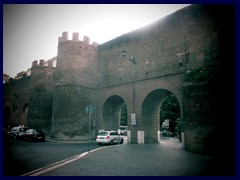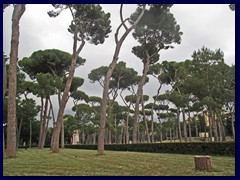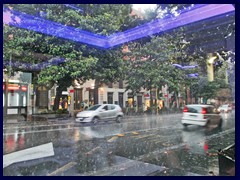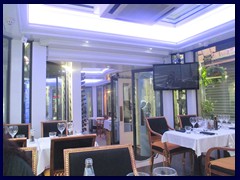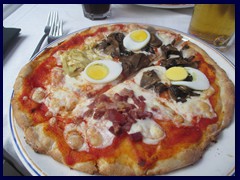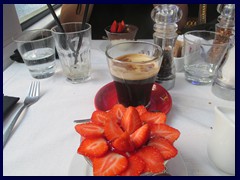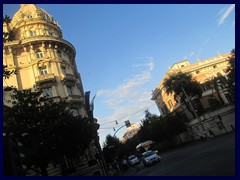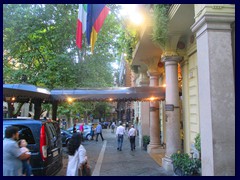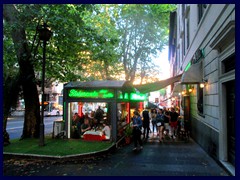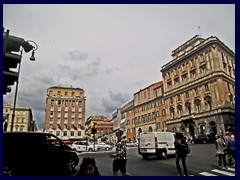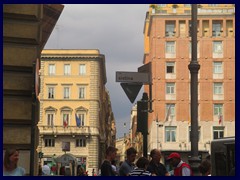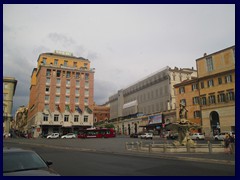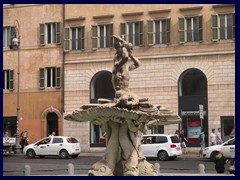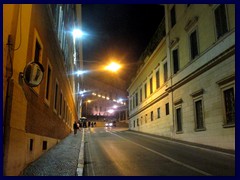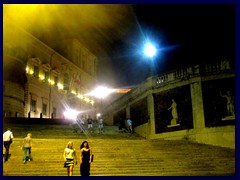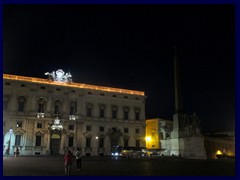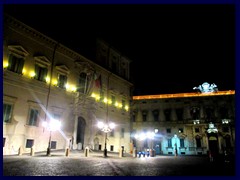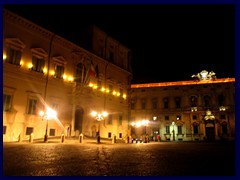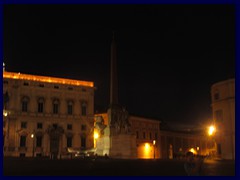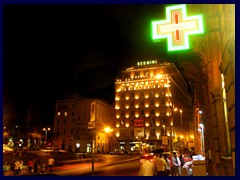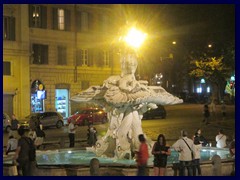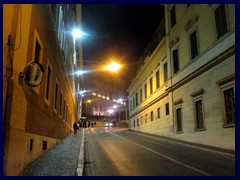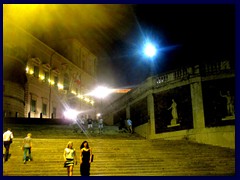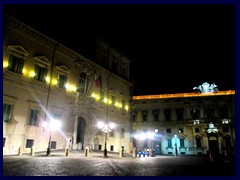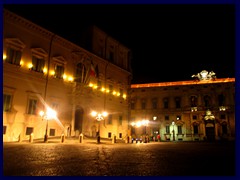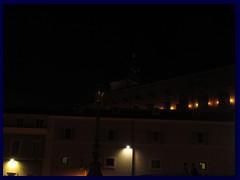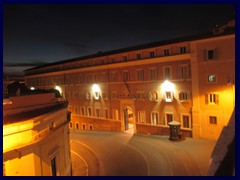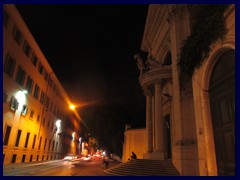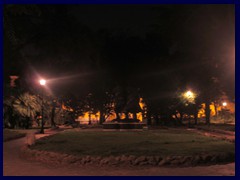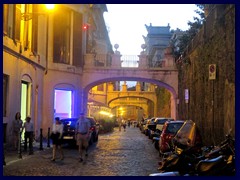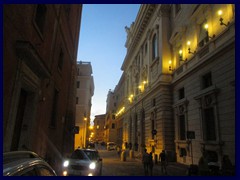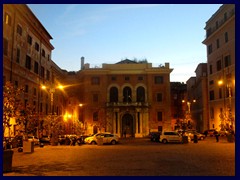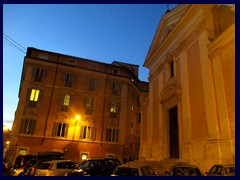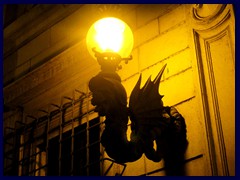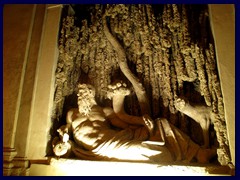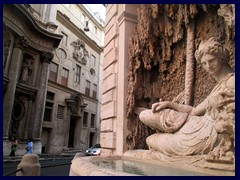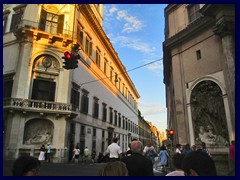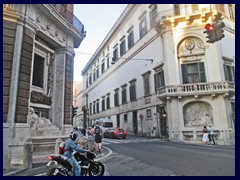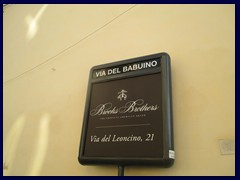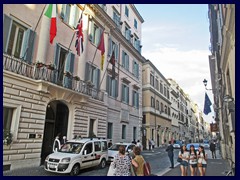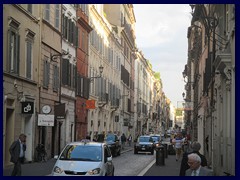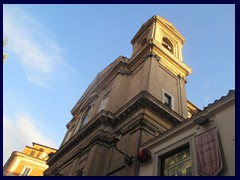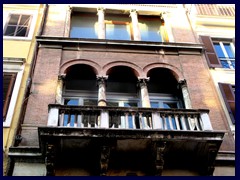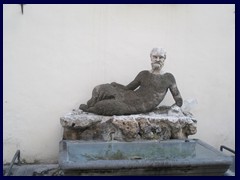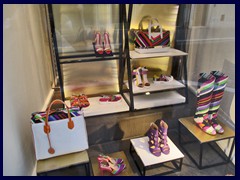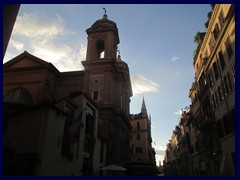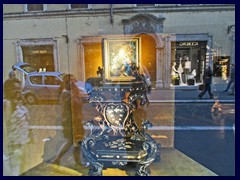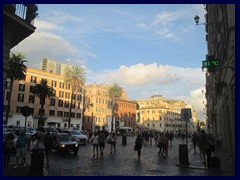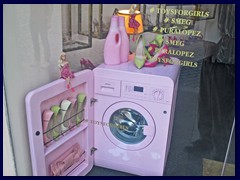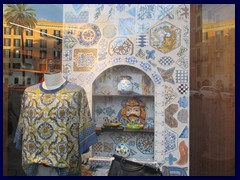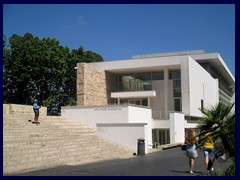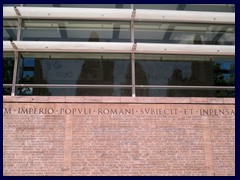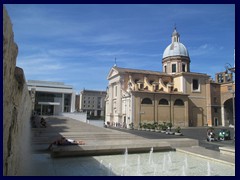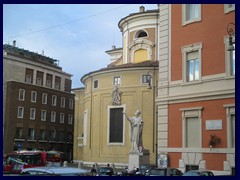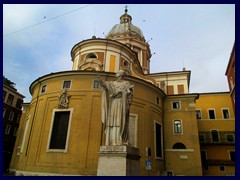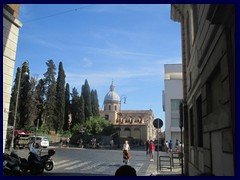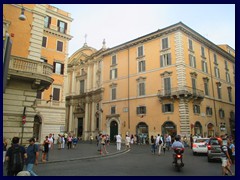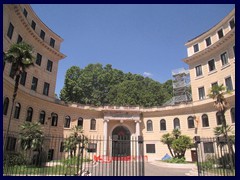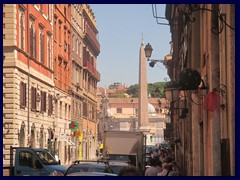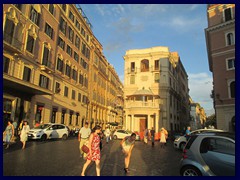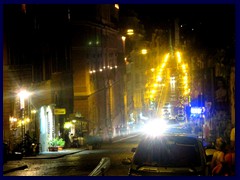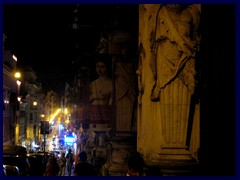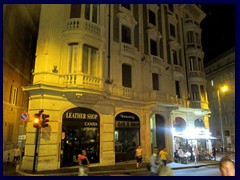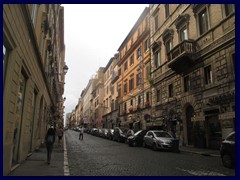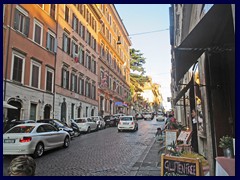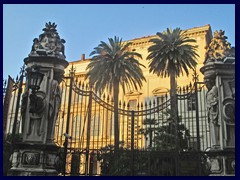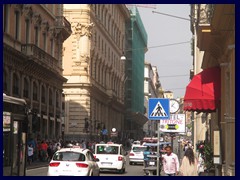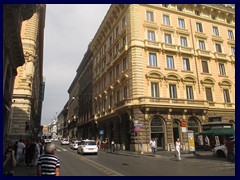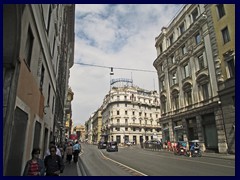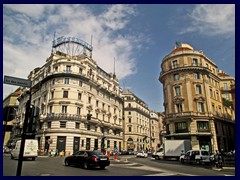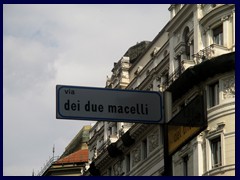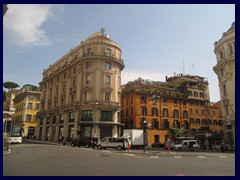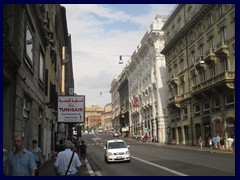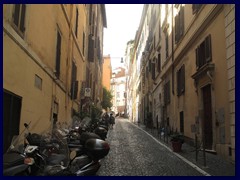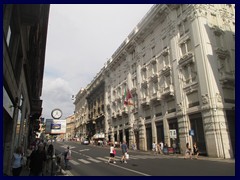Centro Storico West/Campus Martius
- Piazza del Popolo, Piazza di Spagna, Spanish Steps, Fontana di Trevi, Via Veneto,
Via del Corso, Via del Tritone, Piazza Barberini, Via Sistina, Piazza de Quirinale, Ara Pacis
Via del Corso is a one of Rome's major streets. It goes from Piazza del Popolo and ends at Piazza Venezia. Part of it is a pedestrian street daytime with fancy brand stores, beautiful churches and tones of tourists. It is one of the few straight roads of the historical center of Rome.
Piazza del Popolo (People's Square), where Via del Corso, Via del Babuino and Via di Ripetta departs, is one of the most important and lively squares of Rome. It is is surrounded by white neoclassicist buildings, and mostly known for it's twin churches, Santa Maria dei Miracoli (completed 1681) and Santa Maria in Montesanto (completed 1675), and an Egyptian obelisk of Ramses II from Heliopolis (under renovation during our visit). There are cliffs with viewing terraces right above the square, where the popular Pincio Park begins. Street musicians, sculpture, fountains and restaurants can also be found around the square. Until 1826 Piazza del Popolo was a place for executions. Giuseppe Valadier designed the current square.
Piazzale Flaminio a square that is a transport hube with some ancient structures. You find it at the gate to Piazza del Popolo that is part of the Aurelan city wall (Porta del Popolo).
Piazza di Spagna is the small square along Via del Babuino, where you find the famous Spanish Steps. The Spanish Steps, considered one of the main sights of Rome, are situated on a hill and is a popular place to sit down for tourists. The steps was inaugurated by Pope Benedict XIII during the anniversary 1725. It was designed by Alessandro Specchi and Francesco De Sanctis, after decades of discussions about how to urbanise the steep Pincian hill up to the roman catholic renaissance church on top of the hill, Santa Trinità dei Monti (that was under renovation during our visit unfortunately), and the Egyptian obelisk next to it, Obelisco Sallustiano. The baroque stairs were renovated in 1995. The square was named after Palazzo di Spagna, seat of the Embassy of Spain. In the 17th century the Spanish ambassador had his residence here, and the area was dangerous at night, since people were forced into the Spanish army. Fontana della Barcaccia, one of Rome's most popular fountains can also be found on the centrally located Piazza di Spagna. The fountain was commisoined by Pope Urban VIII and designed by Bernini and his son. It was completed in 1627. Beware of the Indians that try to force roses upon you around the spanish steps!
Via Sistina is a nice, hilly road that goes from Piazza di Spagna down to Piazza Barberini, a square on Quirinal Hill where you will find Hotel Bernini, Fontana del Tritone and Fontana delle Api -two fountains by Bernini, and the start of Via Veneto.
Until the 18th century, human corpses were displayed on Piazza Barberini for identification.
Via Veneto is a winding road that is one of the city's most prestigous addresses, luxury hotels like the Westin Excelsior and Grand Hotel Palace, the US embassy (Palazzo Margherita), fancy stores and restaurants (extremely expensive!). The full name is Via Vittorio Veneto and is named after the Battle of Vittorio Veneto, a Italin WWI victory in 1918.
Fellini's 1960 movie La Dolce Vita was centered around via Veneto (and Fontana di Trevi). Via Veneto is very curvy but short, goes between the Pincio Park (near an ancient part of the wall) and Piazza Barberini and it's buildings reminds more of Paris then Rome. Via del Tritone is a busy road that goes between Piazza Barberini and Piazza di Monte Citorio, in an East-West direction. At Piazza Barberini it changes name to Via Veneto.
Via delle Quattro Fontani (Road of Four Fountains) is a road that has an intersection with four renaissance fontains, one in each corner. They where commissioned by Pope Sixtus V and installed in the 1580s.
Fontana di Trevi is a baroque fountain at Piazza di Trevi in the Trevi district in Rome's historical part. It is the most famous fountains in Rome, and is famous from the scene from the Fellini movie "La Dolce Vita" when Anita Ekberg bathed in it. Unfortunately it was closed for renovations during our visit in 2015, and covered with glass panels and scaffoldings. It was designed by Nicolas Salvi. Before 1629, this was the terminal point of an important aqueduct. It is said that if you through a crown using the right hand over the left shoulder, you will one day return to Rome. Today you find pedestrian streets, icecream café, souvenir stores and restaurants in the Trevi area.
At Piazza de Quirinale you will find Palazzo del Quirinale, the residence of the president of Italy. It is situated on Quirinal Hill, the highest of Rome' seven hills. Palazzo del Quirinale, completed in 1583, has housed 30 popes, 4 kings and 12 presidents. The palace was the residenc of kings until 1946. It is the 9th largest palace in the world, 20 times larger then the White House in Washington! The palace extends on a long road, Via del Quirinale, that is a bit dull to walk on since you only see the side of the palace. The palace has 1200 rooms, called Hall of the Zodiac, Augustus Hall, Hall of the Mirrors etc. At the piazza, high above Rome near Fontana di Trevi, you will find an obelsik with a cross on top a fountain with sculptures of horses, La Fontana dei Dioscuri. We only visited Piazza de Quirinale at night.
"Il Babuino" on Via del Babuino is one of Rome's so called "talking statues", where political messages can be written, and the street was named after it. It is situated next to a restaurant and is an ancient depiction of Silenus, half man, half goat.
Ara Pacis (Altar of Peace) is a monument from 9 BC inside a modern glass building next to Via di Ripetta and the east banks of River Tiber, near our hotel. The monument and building was dedicated to Augustus, the first emperor of Rome, to celebrate his triumphal return from the civil war. It was reconstructed in 1938 after several pieces had been scattered to different museums, and the glass covering was built in 2006. The mausoleum of Emperor Augustus is a circular building, hidden behind trees, that is situated right opposite the Ara Pacis. It was designed by Emperor Augustus! The interior of the mausoleum is no longer open to tourists, since it has fallen into decay.
